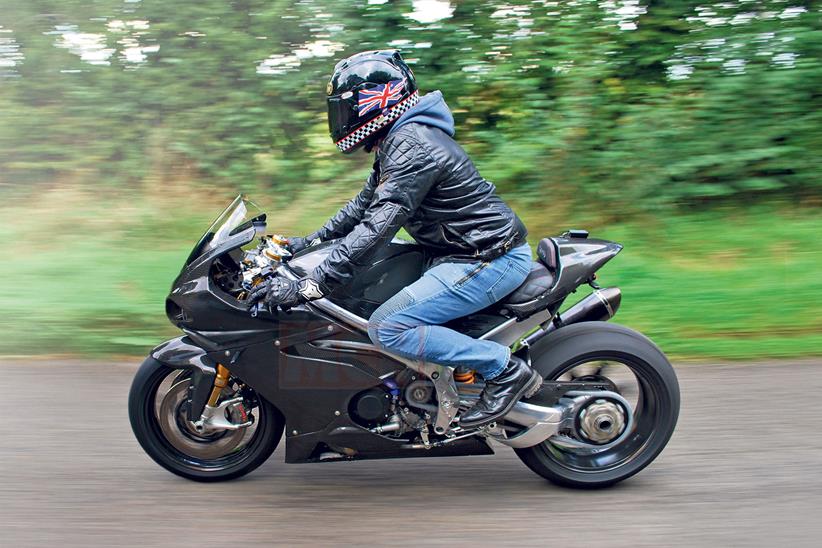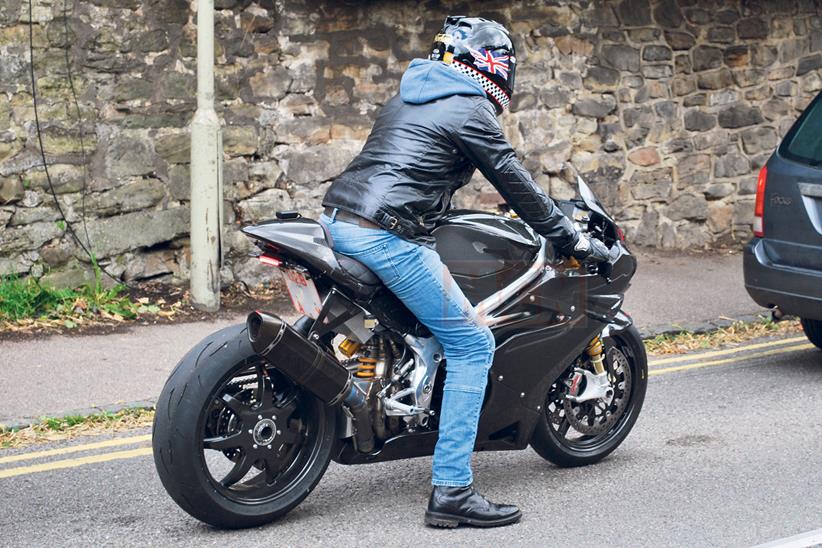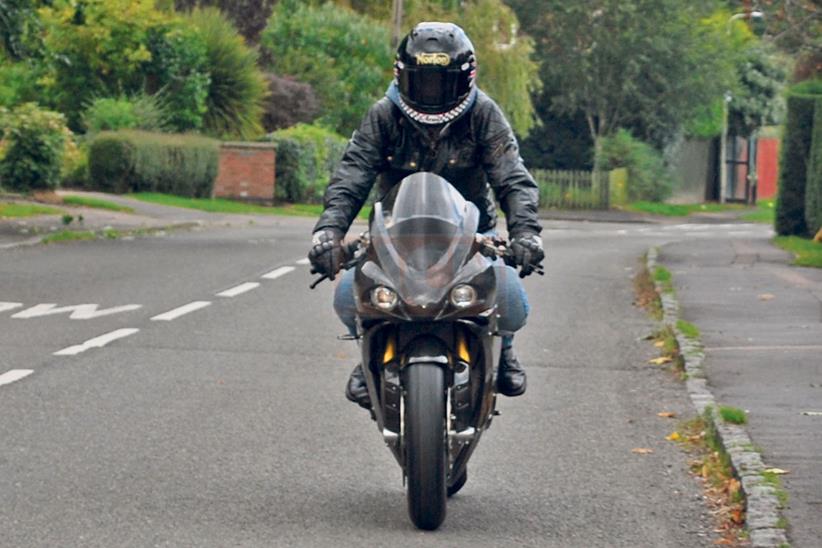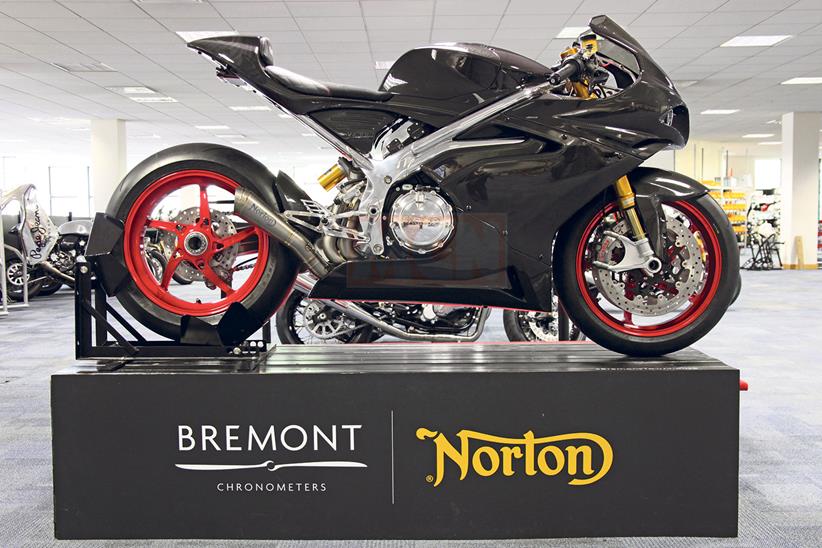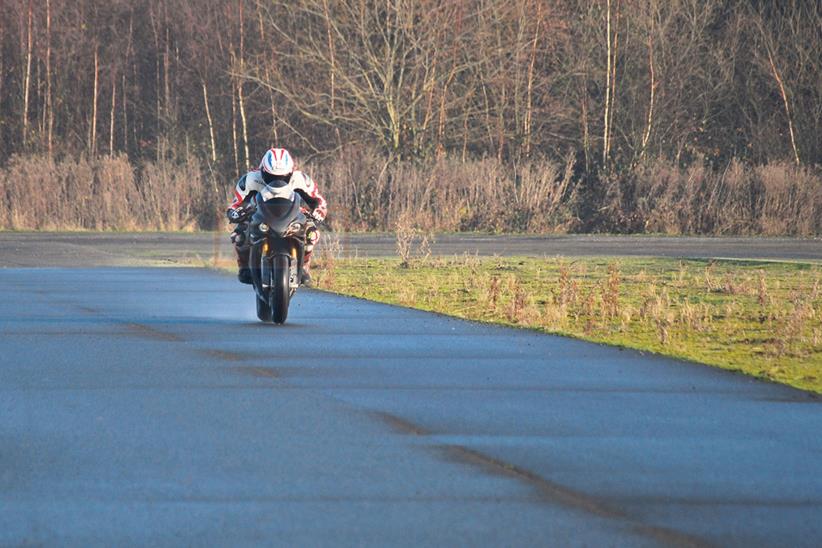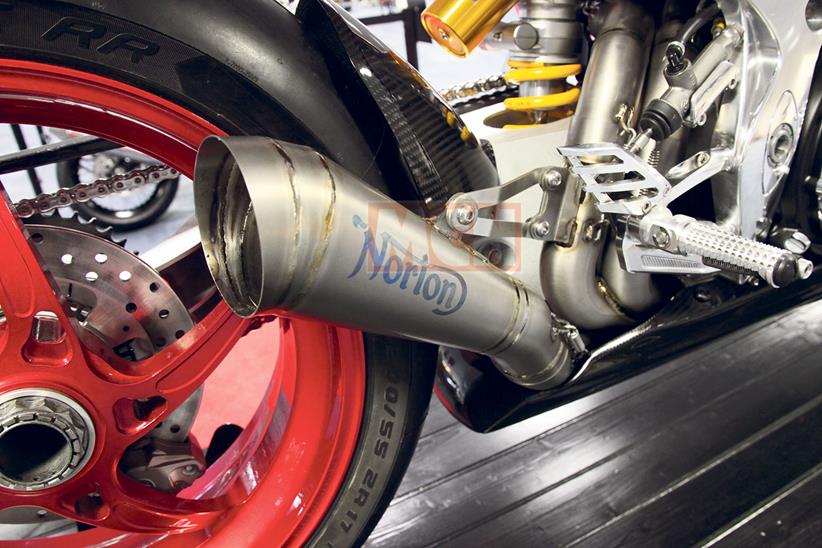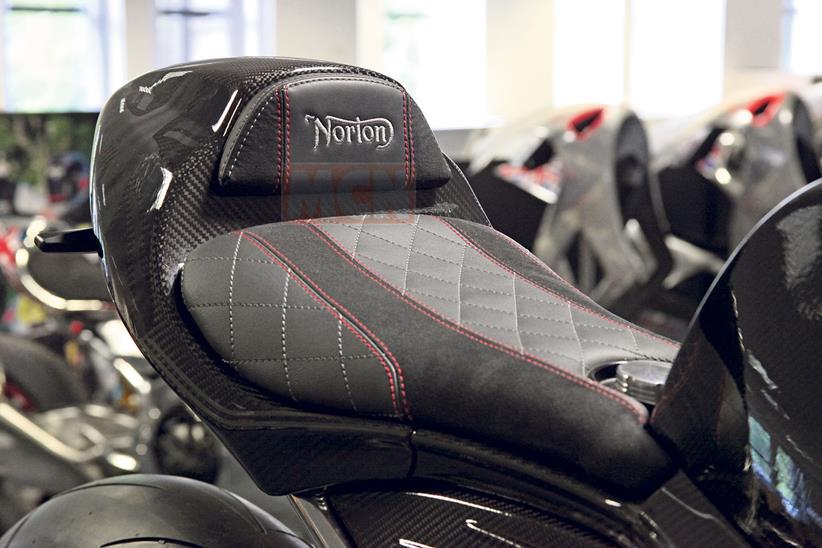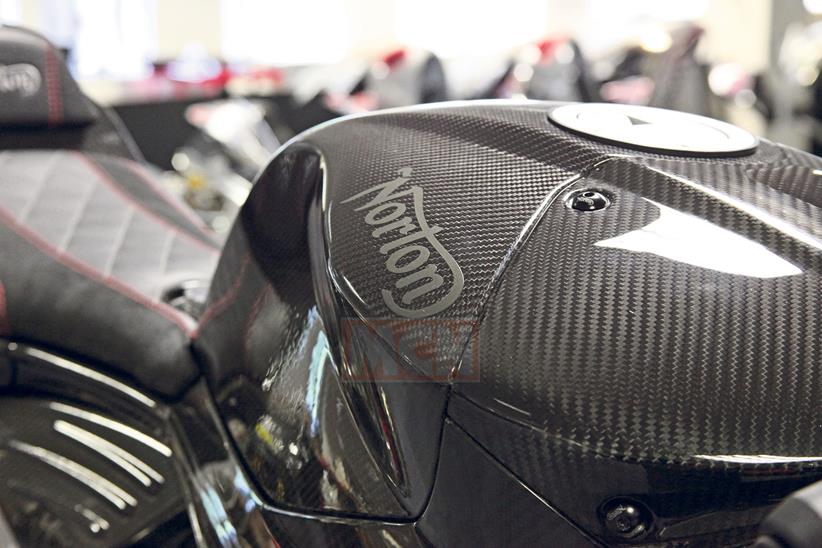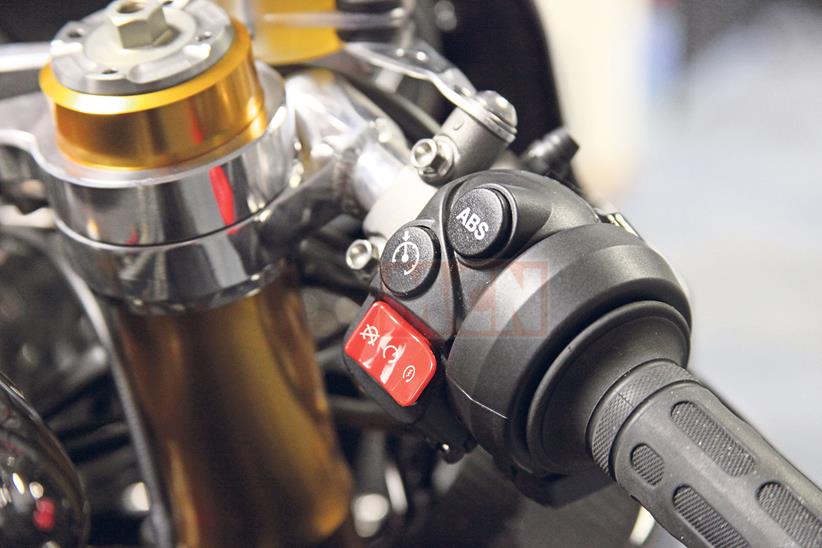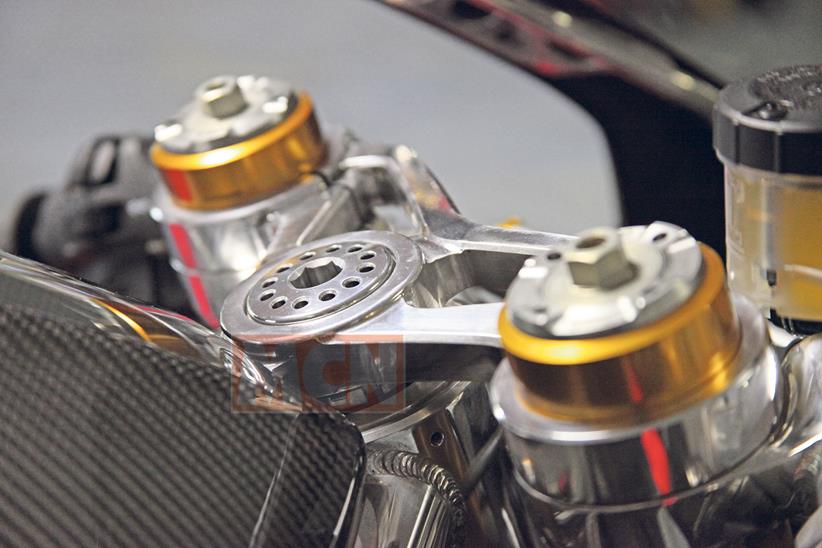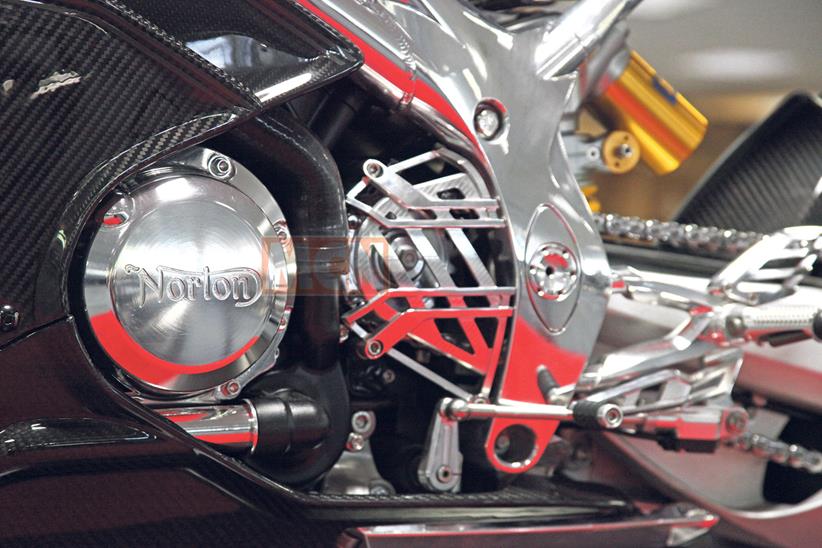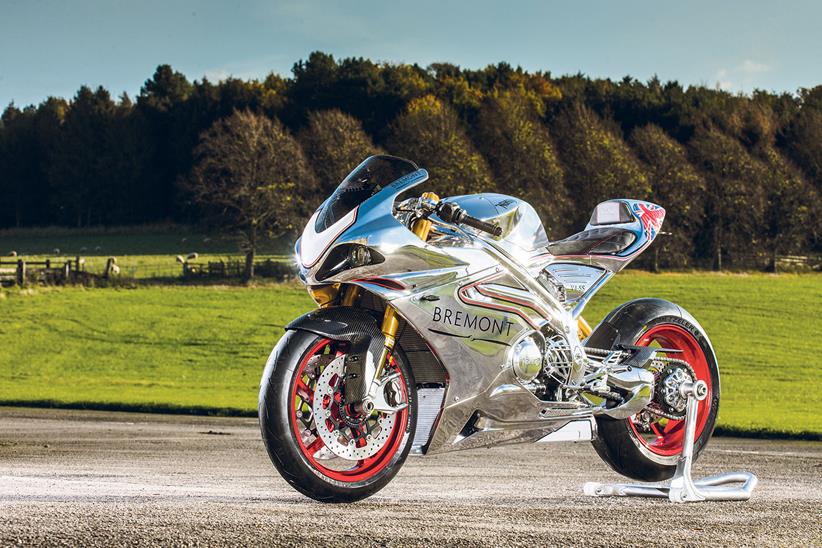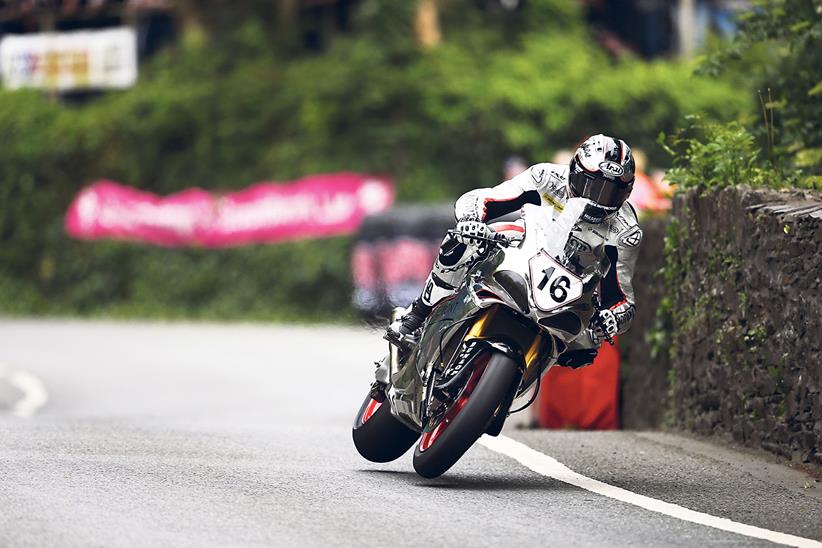Norton's V4 Lives!
New Norton superbike is real – and undergoing final road testing ahead of official launch
Just ten months ago Norton revealed their first prototype V4 SS to the world through MCN. It looked utterly incredible – a British superbike for the modern era, a stunning blend of mechanical engineering excellence and top-flight electronics, wrapped up in a bold silver livery that dazzled as strongly as the spec sheet.
Within days of being unveiled the limited edition of 200 V4 SS models were already sold out, and almost 300 more RR versions have joined the order book since. With chassis testing essentially complete, and the final stages of engine and electronics development well under way, Norton are currently constructing a new production line at the Donington Hall factory to start building the new bike.
TOP STORIES
- 4 things we like about BMW’s G310 GS
- ‘A great success’ for third scooter charity rideout
- ‘Coffee, cakes and motorcycles mix well’ for Macmillan Coffee Morning
- The 5 best waterproof gloves that won’t make you sweat
- Inside Ducati: MCN walk around the Bologna factory
It’s been an incredible journey for the small team, led by CEO Stuart Garner and Norton’s guru designer, Simon Skinner – from whose imagination the V4 was born. Speaking at the factory last week, Skinner revealed the extent of the relentless product development the V4 has been undergoing.
“Over the last ten months it’s all been about the productionising of the bike,” says Skinner. “So it’s all been about durability testing of all the components, and the refinement of the chassis. The chassis has always been good because of what we’ve learnt at the TT. The production bike frame is identical to the SG6 TT bike that we raced this year. The swingarm is different [the SG6 uses a longer twin-spar swingarm], but the stiffness is the same. We’ve tested several different stiffnesses of swingarm, with different ribbing on the inside, and picked the one to match the frame, and to make the bike exciting to ride.
Birth of an icon
“I’ve always wanted to make an iconic motorcycle, and it’s got to be fun to ride, and it’s got to be beautiful, and it’s got to be a race winner. We’re not there yet, because we’ve not won anything with it. But maybe one day. There are still issues with the race bike that we can fix – mainly the aerodynamics. But it’s now basically a road bike that we’re racing. We’ve flipped the coin because we raced with pure race bikes until 2017, but now we’re racing a production road bike. But that’s massively encouraging because we’re sixth, and we’re not going as fast as we can yet.
![]()
“We’re now finalising our frame welding production process. The jigs we use mean we weld the frames they shrink to the perfect size, tightening by 5mm in one direction, and 2.5mm in the another, meaning they’re perfect once welded. Other manufacturers weld their frames, then machine them to meet their tolerances, we don’t do that. We can control the process so tightly now that we’re at nought-point-something accuracy. The chassis sections are made in the UK, too. We used the investment in Norton to set up a UK supply chain for as many of our parts as possible.
“Our frame isn’t actually very stiff. Honda describe chassis perfection as the bike should flex like a bow, and what they mean is that all the parts should work in harmony. When Cameron Donald rode the race bike he said that the frame was very stiff, and the swingarm wasn’t – so the structures didn’t match. Cam said it felt like there was a hinge in the middle because the chassis wasn’t flexing and the swingarm was. We’ve worked hard on that for the new V4. So we use less torsional stiffness to create more feel, and match the swingarm to the frame.
“A lot of the high-speed chassis testing has been done by Steve Plater and the combination of the OZ Racing wheels will now come with Dunlop GP Racer D212 tyres, because they performed best in testing, and had the best stability.”
The most powerful Norton ever
“Chassis testing is largely complete now, we have three full-time test mules running all the time, and engineers looking at the engine development which is still ongoing. All the development is in-house, but with some help from Ricardo. We just need to keep putting miles on the engine to thoroughly test the durability, keep refining, and ensuring the electronics work perfectly.
![]()
“We designed the engine with Ricardo using wave analysis to identify the engineering we needed to get the power and torque curves we wanted. The other advantage we’ve got is that we designed the engine with the chassis at the same time, which is a really powerful position to be in, because we can move elements to ensure the best possible packaging overall.
“Our engine bears almost no resemblance to the Aprilia, our engine is more compact then theirs, despite being 20% bigger in capacity. We could have run a 90-degree V, which would be about 3kg lighter because there’s no need for a balance shaft. The Honda V4 doesn’t need one because it has offset crankpins, but we couldn’t do that and achieve the revs we wanted, so we run a balance shaft. But it’s the best compromise, and the 90-degree V wouldn’t fit on our frame. And we’re getting a lot more power, over 200bhp. Every engine will essentially be blueprinted, with graded bearings, weighed rods and so on – meaning we have to buy three sets of bearings for every engine just to make sure we can grade them perfectly.”
BSB beckons…
“The engine is capable of being designed as a 1000cc version, but it’s almost a new engine at that point. We’d have to do a lot of engineering to make that happen, but we always factored it into the design so that we could take it racing. So yes we could take it down to 1000cc and race it. Have we started? No. But we could do it. Who wouldn’t like to see that? Two Norton V4s racing two Ducati V4s… The crowds would double overnight. There might be other ways of racing it elsewhere, but BSB is where we’d want to be really.
Boxes of tricks
“OMEX Technology and Gems have developed the ECU and dashboard with us, and helped with the layout of the electronics. All the development we’ve done on the race bike uses eight or ten control boxes, but for the road bike we’ve integrated all of those into just one ECU. So the race bike was used as a learning platform for the road bike. The electronics is the biggest nightmare. You know what you’re getting with an engine casting or a bike’s geometry, but with electronics you’re always wondering why it takes so long and why it costs so much – but it’s critical. Interestingly, we’ve done all the chassis and engine development with no electronics on the bike. Electronics won’t make a bad bike good, but they can make a good one a bit better. So we’ve got a good fundamental structure to work with.
A British affair
“We’re making the V4RR as British as we can, and the Academy plays a crucial role in that. The new Technical Centre is now up and running, and both things cost us a lot of money, but we’ve got some cracking people through the programme. The new CNC machines mean we can almost design in real time, and test parts in billet before we productionise them for casting. We might even put the first few customer bikes out with billet covers.
“We’ve brought all the exhaust manufacturing in-house now, too. Motad were building our systems, but when they went out of business we bought everything from them, and now do the whole process ourselves.
“We’re working out the production line now for the V4, and will separate the build process out into stages, rather than building a bike on the bench as we do with Commando. So we’re looking at segmented stages of production, with at least a chassis stage, an engine stage, electronics stage, and bodyline. The first 500 bikes will be built under SVA (Single Vehicle Type Approval), and will have a side exhaust on them, while the eventual Euro4 homologated bikes will have an underseat system.
“The V4 will always be a single seat option. The frame has been tested to a strength that can support a twin seat, but there’s no plans to do that yet. We’ve got a year’s worth of orders already for 200 SSs, and 300 or so RRs, and we need to deliver those without adding more complication.
“We need to make sure we can walk before we run – we made that mistake before.”
Q&A with Stuart Garner, CEO Norton Motorcycles
MCN: When will the new V4 be ready for customers?
SG: The new V4 will be ready when it’s ready, but we originally said the second half of 2017, so we’re going to be at the end of the second half, but we want them out prior to year-end. It’s really important that we don’t rush it out if it’s not ready, that would be a disaster. We want to put it out refined and calibrated, and ready – the real deal. It will be put up against the Panigale and R1 and everything in its class, and we need to deliver a motorcycle that can punch its weight in that class. We’re confident we can do that, but it takes time. The scars of 2010, 2011, 2012 are still deep, and we’re not going to make those mistakes again. It’s the most technical and high-performance British superbike for a generation, and if it takes a few months more to perfect it, we’ll take that time.
![]()
MCN: How many can you build each year?
SG: Once we’re at release point, we’re aiming to be able to deliver 500 to 1000 V4s per year, but until we’re production ready it’s impossible to commit to those figures. There will be other derivatives of the V4 to run alongside the RR, too.
Can Norton deliver the V4?
SG: We’ve got 120 staff now making our British-built motorbikes, and we’re still growing fast. With V4 coming we’re been growing to meet the demand, and are now running at almost double what we need for just 961, so that we’re ready to start building and delivering the V4 when the bike is production-ready.
MCN: How important is the V4 to Norton?
SG: The V4 has secured our future, and given Norton a viable profitable platform, and a way to grow the business. And it’s here, it’s happening. People are always sceptical, but we’ve done it, we’ve learnt hugely from our past mistakes. It’s an amazing time for British motorcycling, and we’re in a strong position with a great order book here and overseas.
MCN: Is Norton chasing volume sales?
SG: We want to be happy in the categories we can be good in. We’re not interested in being a volume manufacturer, we wouldn’t want to do that with Norton. If we wanted to do volume we’d have done it with another brand, like BSA, but that’s not what Norton is about.
MCN: Do you feel that Norton is properly ‘back’ now?
SG: We’ve got to where we wanted to be, but in a very different way. There was plenty of scepticism that Norton could be resurrected, but we’ve done it. We’re currently exporting 80% of our bikes, but there are territories where we can’t operate right now because of trade tariffs. But we are getting into those territories now with partners, like Zongshen, which enable us to take our IP to new territories as joint ventures. There’s a lot more to growth and opportunities to come over the next twelve months.
Josh Brookes has ridden it!
![]()
Brookes should understand the V4 RR better than most – but does he want one?
While most superbikes are designed for the road first, then modified to become race bikes, Norton’s V4 RR was born on the Isle of Man TT Mountain Course, the product of relentless 37.73-mile laps of brutal testing.
The ballsy riders who have taken on the various SG race bikes have all been critically important contributors to the development of the V4 RR, none more so than Josh Brookes, and ex-racer Steve Plater.
Beyond riding the latest SG6 in anger to an incredible 6th place at this year’s Isle of Man TT, Josh Brookes has also been riding the new V4 production bike – so what does he think of it?
“It’s different, of course. The engine is different, as is the swingarm, and they are two major components,” says Brookes. “The race bike is 1000cc and the road bike 1200, so that is a noticeable difference. The rev limit is lower on the road bike, but the torque is much greater. On the race bike that’s something I didn’t like, the Aprilia engine had no torque so after riding an R1 in BSB riding the Aprilia engine at the TT was strange as it was like the torque was missing, it was all revs! The road bike isn’t as revvy and is far more torquey, that on its own makes it a much more rider friendly bike.
“The chassis itself is exactly the same, the only difference with the race bike is the dual sided swingarm which is a little longer to make the bike more stable as we’re trying to do 200mph down Sulby straight. I think that extra wheelbase is what made the Norton the best handling big bike I’ve ever ridden. The road bike has a shorter swingarm but that’s the same when you look at any race bike compared to a road bike, the swingarm on my R1 BSB bike has modified chain blocks so we can add 15mm extra length. The difference is we take a road going R1 and turn it into a BSB bike, with the Norton they’ve taken a pure race bike and changed it to suit the road.”
![]()
So does it work on the road?
“I honestly think it’s a good package. It’s got a very user-friendly engine character and the suspension isn’t compromised by cost. You’re paying a high figure for the bike so you’re getting the best money can buy, you’re not getting cheap suspension, brakes and wheels. You’re getting what race teams put on race bikes.
“It’s hard to gauge a chassis on the road, you’ve got to go somewhere near the limit of the tyres to experience core chassis issues with any bike but general feeling, turning in, accelerating away from a corner – it’s as good as any bike I’ve ridden. At low speed there aren’t any big chassis differences between the bikes.
“The engine is a key point but I wouldn’t say it’s the only strength. The chassis design, the way the head angle sits with the engine position is very complementary of the bike. It has a nice feel, the handling won’t be an area that disappoints.”
Woof! Look at this! @JoshBrookes fully testing the @norton_ceo suspension over Ballaugh Bridge #trying – another Dave Kneen shot. pic.twitter.com/2yESm3ekOS
— Isle of Man TT (@iom_tt) June 6, 2017
Bring the noise
“It sounds great, too. The feeling of riding is a huge part of why we ride and if the bike sounds nice it adds to that. The V4 engine has a great note to it. It’s got really linear power too, it’s really rider friendly – there’s a reason most MotoGP bikes are V4s these days.
The bike is also very light. Physically it is very light! The production build weight is similar to the weight of our BSB bikes! The V4 with the narrower crank means it has less of that side to side resistance. It feels really easy to change direction and I think it’s because of the smaller rotating mass.”
Room for improvement
“The seating position is quite short from the back of the seat to the handlebars so for tucking in you are quite limited. If you’re taller than me, tucking in becomes a bit tight. But 90%, if not more, of road riders don’t need to tuck in. When I ride on the road I don’t tuck in like I do on a race bike, it might be an issue on trackdays – but even then, it only means your elbows will be outside your knees. On our race bike we had the foam on the back of the seat moved. It’s a small compromise for a very nice looking bike!”
The Norton effect
“It feels special. I think it looks worth the money just standing still! It comes down to feeling though, you don’t just ride a bike to ride a bike. If it was just about riding a motorbike everybody would be riding around on a cheap CBR125! The reason we aren’t doing that is because we want more when we ride. All of the things you’re paying for contribute to the ride, it looks good, sounds good, does what it’s meant to, the brakes feel sharp, the bike doesn’t sound basic – it sounds, feels and looks like a race bike. To me it feels like a road bike, but to a road rider it would feel like a race bike.
“If I had the spare cash, I’d buy one! I’d buy it on looks alone. Unfortunately, I don’t have that much money lying around to do it. If I did, it would be quite high up my list.”
The Facts
Norton V4 SS – £44,000 (sold out)
Norton V4 RR – £28,000
Power 200bhp+ @ 12,500rpm
Torque 95.88ftlb @ 10,000rpm
Engine Norton 72-degree liquid-cooled V4, 1200cc. Chain-driven cams with idler gear for reduced engine height. Titanium inlet valves. Slipper clutch
Chassis Polished aluminium twin tube Shotgun frame with single-sided swingarm, with adjustable geometry.
Suspension Fully-adjustable Öhlins NIX30 fork. Fully-adjustable Öhlins TTXGP rear shock.
Brakes 2 x 330mm full-floating discs. Radially-mounted Brembo Monobloc calipers. Brembo discs, and Brembo master cylinder.
Wheels OZ Racing
Tyres Dunlop GP Racer D212 F: 120/70 ZR17 R: 200/55 ZR17
Electronics Multi-setting traction-control, wheelie control, launch control and cruise control. Uses six-axis Inertial Measurement Unit (IMU), ABS. quickshifter and autoblipper.
Dash Full-colour 7-inch screen with Road, Track and Pro-Race and rear-view camera and build-in datalogger and keyless ignition.
Ignition Keyless ignition system
Dry weight 179kg
Fuel Capacity 18-litre carbon fibre fuel tank
The Future is V4
You won’t have failed to notice that there’s a trend towards V4 superbikes right now, as manufacturers chase the Holy Grail of power, torque, engine cleanliness and efficiency – and that intangible ‘specialness’ that makes their bike stand out from the crowd. Honda have been dabbling with it since the design of their first four-stroke motor in 1951, founder Soichiro Honda believing the 90° V4 to be the perfect configuration. He would have been delighted by the halo RC213V-S superbike his firm eventually released in 2015. But Aprilia, Ducati, and Norton have all taken different approaches to the V4 question.
Norton V4 RR
“The premium European brands are all going V4, because it’s a bit expensive,” says Norton’s Simon Skinner. “For us is gives a compact package and a narrow bike with a slim frame and decent weight distribution. They are dearer to make, but if you’ve got a higher price point, it’s the best configuration.”
Norton’s new V4, designed in-house with the help of engine specialists Ricardo, uses a 72° V4 layout boasting 1200cc, chain driven cams, titanium valves, and a balancer shaft. For Norton the configuration was never in doubt. They needed optimal power and torque from the smallest possible engine and chassis package, which made the V4 their default choice.
![]()
Aprilia RSV4 RF
While Norton have been regularly lambasted for using an Aprilia RSV4 engine in the SG race bikes, it gave the them an invaluable head start on chassis development. They’re often accused of simply copying the RSV4 engine, but the Norton unit is completely different in scale and architecture. Aprilia use a 65° 999.6cc layout developing 201bhp at 13,000rpm, and 85ftlb torque at 10,500rpm – almost 11ftlb less than Norton claim. Despite its reduced V-angle and 200cc capacity drop, Norton say their engine is more compact, more powerful and gruntier.
![]()
Ducati Panigale V4
Ducati only confirmed their new 1103cc V4 only weeks ago – and while we’ve not officially seen the bike yet, leaked images have been flying around the internet for months. While the factory hasn’t revealed the full engine spec, we do know the highlights. Ducati claim over 207bhp at peak, and 88ftlb torque between 8750 and 12,250rpm – putting it very much in the ballpark of Norton’s claims for their V4. The big difference in architecture is that Ducati are sticking to their trademark 90° V, but rotate it back 42° in the frame. Impressively, it’s just 2.2kg heavier than the V-twin Superquadro engine.
![]()
Have a browse for your next bike on MCN Bikes For Sale website or use the MCN’s Bikes For Sale App.
